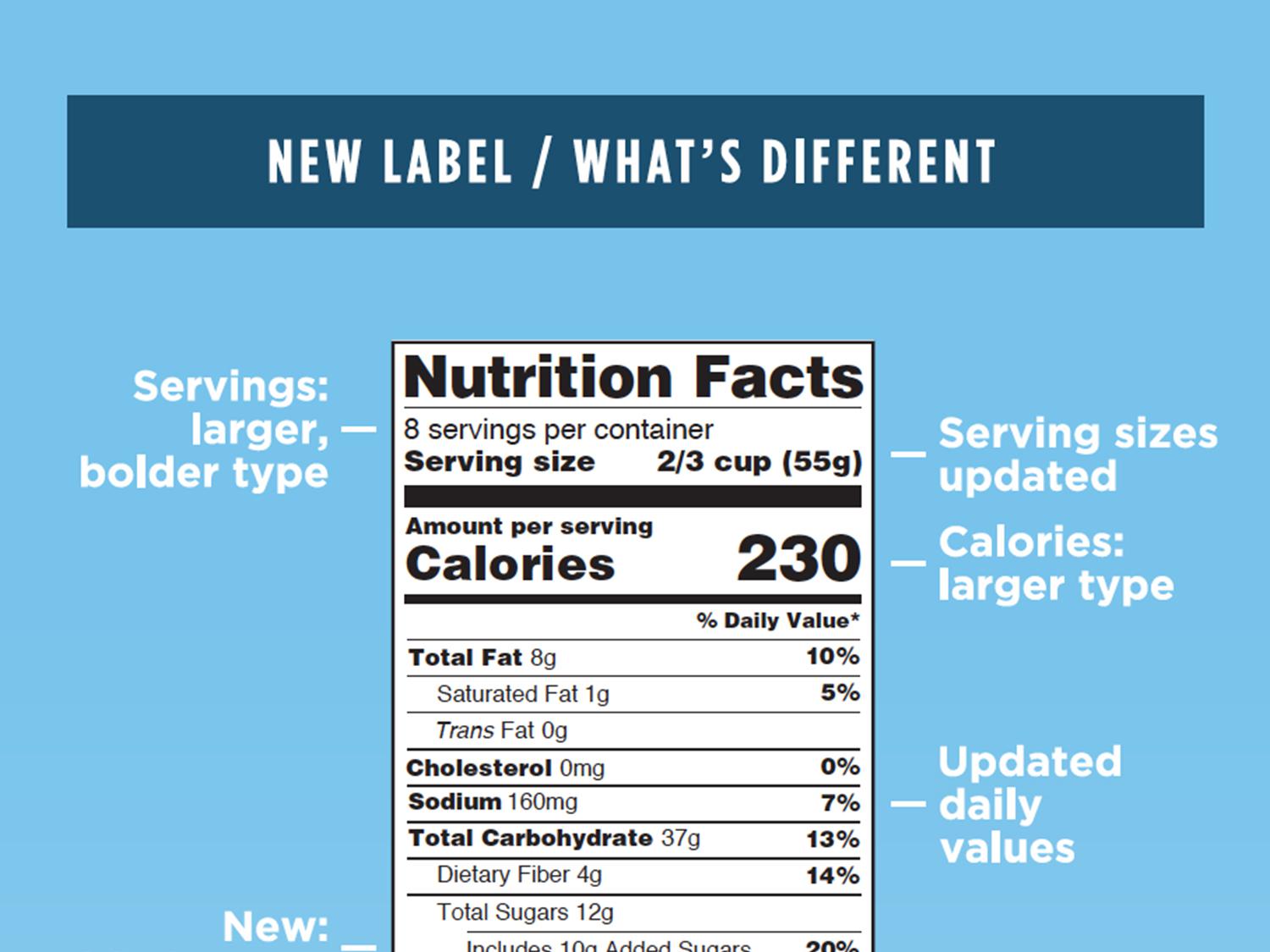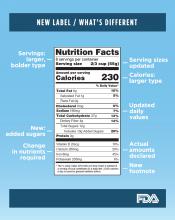Information Possibly Outdated
The information presented on this page was originally released on June 21, 2016. It may not be outdated, but please search our site for more current information. If you plan to quote or reference this information in a publication, please check with the Extension specialist or author before proceeding.
New nutrition labels can improve decisions
By Michaela Parker
MSU Extension Service
STARKVILLE. Miss. -- The iconic design of the U.S. Food and Drug Administration’s Nutrition Facts label will stay the same, but the content of the label will soon be updated to reflect new scientific information.
The FDA announced on May 20 the final changes to the Nutrition Facts label for packaged foods. The label will keep many of the same nutritional facts it has displayed for more than 20 years, but several new features will give it more up-to-date, research-based data.
Brent Fountain, an associate professor of human nutrition with the Mississippi State University Extension Service, said the new Nutrition Facts label will help consumers make healthy decisions.
“For nearly 30 years now, the Nutrition Facts label has been available to help consumers make a good choice, or at least be aware of the choices they are making,” Fountain said. “Since the Nutrition Facts label’s introduction, it has not gone under any significant changes. The changes to the label take into account how we are eating today, while still providing important information in a way that is easy to understand.”
The new design, which goes into effect in 2018, highlights both calories and servings on the label. The calorie information will have a larger font size, and the serving size line will be in a bold font for distinction.
“Generally, the biggest indicator of weight loss or gain is the amount of calories a person consumes,” Fountain said. “By making the calorie content of a food more prominent and matching it to the actual serving size typically consumed, the consumer has a more accurate idea of how many calories that food is going to add to his or her daily caloric intake.”
Another change in the label is an update on serving sizes. Serving sizes will now be based on the amount of foods and beverages that people are actually consuming, not on what they should be.
Many of the portion sizes that are provided on the current Nutrition Facts label are no longer applicable. Several foods are packaged in amounts greater than the listed serving size, but they are often consumed in a single sitting, Fountain said.
“The new label will make it easier for a consumer to know how many calories he or she actually consumed because typical serving sizes have been updated to reflect what we actually eat.” he said. “The FDA has made it much easier for the consumer to determine the amount of calories eaten without having to go through additional multiplication steps.”
Foods that are larger than a single serving and could be consumed in one or more sittings will have two columns of information. One column will provide nutritional facts for the entire package, while the other will define each serving in the package.
The FDA also added a new line to the label specifically for added sugars. These sugars are added to the natural sugars in products, which causes the calorie count to increase.
Ann Twiner, an MSU Extension agent in Sunflower County, said the American Heart Association recommends no more than 6 teaspoons of added sugar per day for women and 9 teaspoons for men.
“Extra sugar adds to your calories without adding nutritional value,” Twiner said. “A person can consume too many extra calories without being aware of the amount of calories they are consuming. This will lead to weight gain, which can lead to other health issues,”
A new footnote on the label will better explain what percent daily value means.
“The percent daily value for added sugar will help consumers know how much sugar is in the product,” Twiner said. “If the item’s daily value is 20 percent or higher, that product is high in sugar. If the daily value is 5 percent or less, that product is low in sugar.”
The FDA hopes that the new Nutrition Facts label will make it easier for consumers to make more informed and healthy choices.
“It will be more user-friendly by adding the larger print and highlighting calories and servings,” Twiner said. “Read the food label to know what you are eating so you will become more aware of the hidden salts, sugars and fats in foods.”
The new Nutrition Facts label will be found on most packaged foods by July 26, 2018. Manufacturers with less than $10 million in annual food sales will have an extra year to comply.









